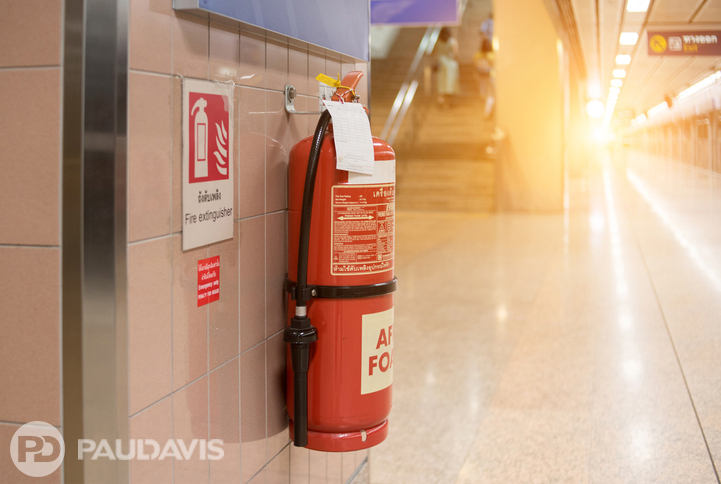
After the fire marshal evaluated the charred remains of a popular women’s clothing store, he delivered news that compounded the owner’s distress. Even if employees had discovered the smoke earlier, tools for quenching the smoldering materials were likely useless: the fire extinguishers had expired. He advised the owner to contact a restoration company promptly. Statistics show one in four businesses fail to reopen after a fire. Getting immediate help would give her store a better chance of recovery.
Safety professionals agree: fire extinguishers are a critical first line of defence against the devastating effects flames have on businesses. The best way to ensure they can help save yours if a blaze erupts? “First, start a discussion with local emergency responders", says Christopher Thomas, Technical Trainer at Paul Davis. “These professionals are experts in choosing the right types of fire extinguishers for the specific activities that take place on your property. They also advise on installation, maintenance and proper use.”
Extinguisher selection can be somewhat confusing. There are five types of fire extinguishers designated Class A through Class K. Class A extinguishers fight wood, paper and textile fires and are ideal for offices, for example. Class B types fight fires caused by flammable liquids such as gasoline, oils, solvents and alcohol. Class C extinguishers suit areas with energized electrical equipment like servers, motors and transformers. Class D types quench burning metal powder and shavings in machine shops or industrial areas. Commercial and restaurant kitchens require heavy duty Class K models that snuff burning cooking oils and greases.
Extinguisher placement is important as well. Extinguishers should be placed for optimal coverage of the space. Often, Class A extinguishers are placed every 75 feet. Class K types, which combat hotter fires fueled by more flammable materials, are typically installed every 30 feet. Wherever they are placed, the extinguishers must be securely mounted, easily accessible at all times and very clearly marked to call attention to their location.
Once the right models are installed, building occupants should be trained and drilled in their use. Local emergency responders - or the professionals at your local Paul Davis location - can train employees when to safely utilize a fire extinguisher and how to deploy the recommended PASS technique: Pull, Aim, Squeeze and Sweep.
Finally, all business owners should schedule and keep records of extinguisher maintenance; without it, these business and life-saving devices aren’t reliable or effective. Experts and government regulators recommend that employers visually inspect extinguishers monthly, maintain them yearly, and perform specialized testing every five to 12 years depending on type.
If, despite your best efforts, fire damages your business, Paul Davis is just a phone call away at 800-661-5975. Your local Paul Davis team will be onsite within four hours of a call for help.
